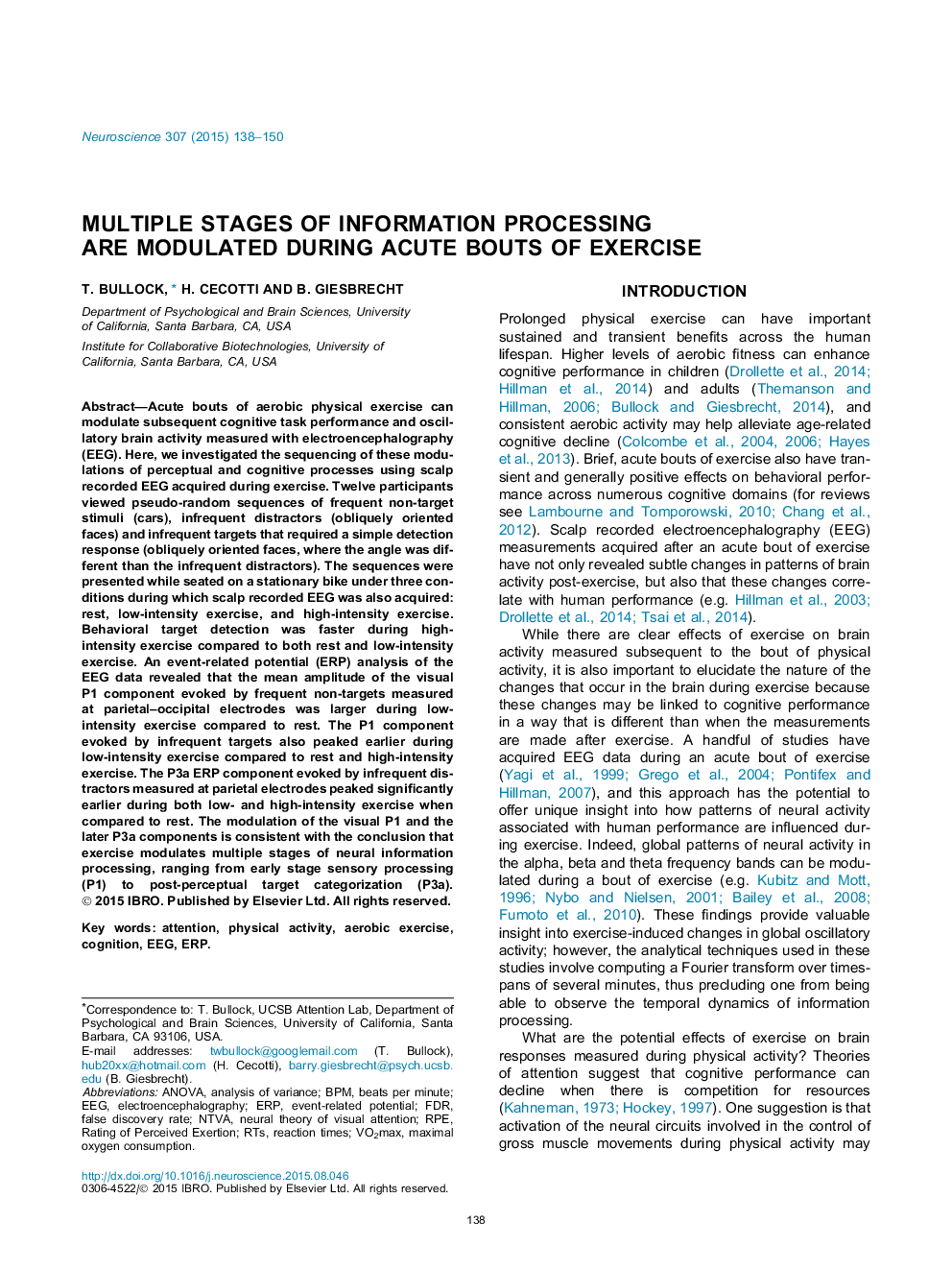| کد مقاله | کد نشریه | سال انتشار | مقاله انگلیسی | نسخه تمام متن |
|---|---|---|---|---|
| 4337444 | 1614769 | 2015 | 13 صفحه PDF | دانلود رایگان |
• Used EEG to isolate the stages of information processing modulated by exercise.
• Recorded EEG while subjects detected visual targets at rest and during exercise.
• Low-intensity exercise enhanced visually evoked responses.
• Low- and high-intensity exercise facilitated later post-perceptual neural responses.
• Data suggest that aerobic exercise modulates multiple stages of neural processing.
Acute bouts of aerobic physical exercise can modulate subsequent cognitive task performance and oscillatory brain activity measured with electroencephalography (EEG). Here, we investigated the sequencing of these modulations of perceptual and cognitive processes using scalp recorded EEG acquired during exercise. Twelve participants viewed pseudo-random sequences of frequent non-target stimuli (cars), infrequent distractors (obliquely oriented faces) and infrequent targets that required a simple detection response (obliquely oriented faces, where the angle was different than the infrequent distractors). The sequences were presented while seated on a stationary bike under three conditions during which scalp recorded EEG was also acquired: rest, low-intensity exercise, and high-intensity exercise. Behavioral target detection was faster during high-intensity exercise compared to both rest and low-intensity exercise. An event-related potential (ERP) analysis of the EEG data revealed that the mean amplitude of the visual P1 component evoked by frequent non-targets measured at parietal–occipital electrodes was larger during low-intensity exercise compared to rest. The P1 component evoked by infrequent targets also peaked earlier during low-intensity exercise compared to rest and high-intensity exercise. The P3a ERP component evoked by infrequent distractors measured at parietal electrodes peaked significantly earlier during both low- and high-intensity exercise when compared to rest. The modulation of the visual P1 and the later P3a components is consistent with the conclusion that exercise modulates multiple stages of neural information processing, ranging from early stage sensory processing (P1) to post-perceptual target categorization (P3a).
Figure optionsDownload high-quality image (277 K)Download as PowerPoint slide
Journal: Neuroscience - Volume 307, 29 October 2015, Pages 138–150
